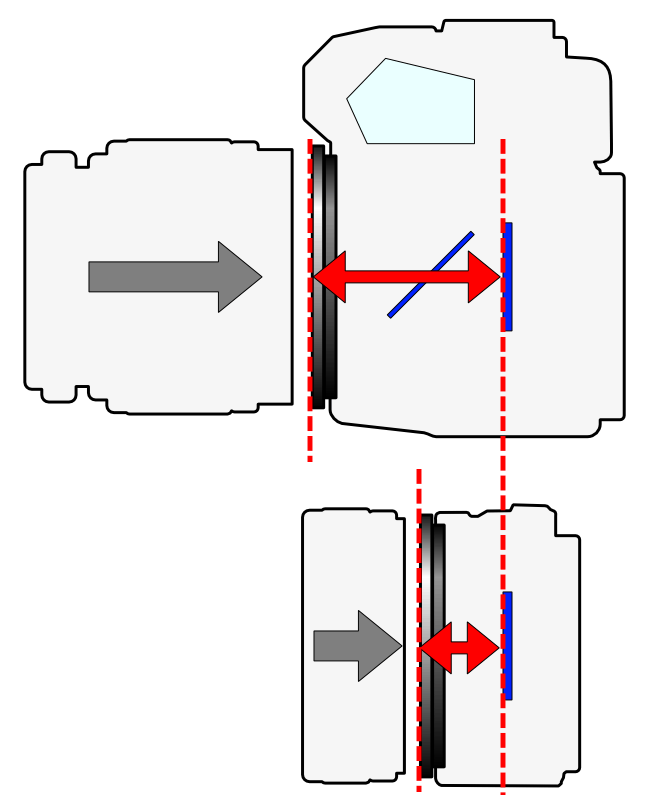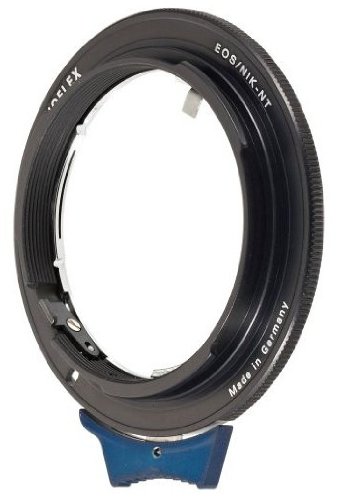Hey Sol! Is Stacking Lens Adapters a Bad Idea?
When it comes to lens adapters, more is not always be better.
Brendan asks:
Have you tried using the Canon EF Speed Booster with any other adapters aside from Nikon? I’m planning on investing in Contax glass and am trying to figure out if I can get by with the EF Speed Booster and a Contax to EF adapter. I’m not really interested in buying two Speed Boosters.
A Speed Booster can cost as much as (or more than) an actual lens, so it’s easy to understand the desire to buy only one. Stacking a standard adapter on the Speed Booster to allow you it with other lens mounts seems like a great workaround, right?
Stacking adapters does work– at least in theory. However, in practice, there are a number of potential issues with stacking adapters that could negatively affect your image quality and even damage your pricey Speed Booster.
Extremely Tight Tolerances
Lenses are designed to be positioned at a precise distance from the sensor. Adapters fill in the gap so that the lens is properly positioned on cameras like the GH4 with a shorter flange focal distance than the lens was designed for.
With a high-quality adapter, the lens performs just as well as it does on the camera it was originally designed for (e.g. a Nikon lens on a Nikon camera). However, the adapter must meet extremely tight tolerances to position the lens at the exact distance from the sensor. If the adapter is even just a tiny bit off, the image quality may be greatly reduced due to issues with sharpness, focus, and other aberrations.
At best, the distance scale on the lens will no longer be accurate, at worst, the lens will be completely unusable when using a poorly-made adapter. This is with just a single adapter– stacking multiple adapters compounds the issues even further if either adapter is not manufactured to exacting specifications.
Risk of Damage
Even when you’re using the best possible adapters, stacking puts your Speed Booster– and your camera– at risk of being damaged.
Metabones warns that some adapters can actually short the Speed Booster’s contacts and damage its internal electronics. This would turn your Speed Booster into a $650 paperweight and may even damage your camera as well. Covering the Speed Booster’s electronic contacts with non-conductive tape may be an option, but that may also introduce other issues, such as a buildup of residue on the adapter.
Proceed with Caution
As a proof of concept, I have used a Nikon lens on a Canon EF Speed Booster with the aid of a thin adapter.
Thankfully, I did not experience any major issues with image quality or functionality, but the additional adapter did result in more play between the lens and the camera, which may present issues with other lenses. As a result, while it is interesting for experimentation, stacking adapters is not recommended in a mission-critical environment where an equipment failure would keep you from getting the shot.
If you’re going to adapt lenses, the best option is to use a single high-quality adapter between the camera and the lens. This reduces the number of potential points of failure and gives you a more solid setup.
Submit A Question
Have a question that you would like to have answered once and for all? Send me your question to have it featured in a future Q&A post!
Related
- Review: 7 Days with Metabones’ Canon EF Speed Booster — More details on stacking adapters to use a Nikon lens on a Canon EF Speed Booster.
- Panasonic GH4
More Resources
- Why You Should Be Excited About the Panasonic GH4
- Lens Options for the Panasonic GH4
- Memory Cards for the Panasonic GH4
- Rigging the Panasonic GH4
- Stabilizing the Panasonic GH4
- Getting the Best Audio from the Panasonic GH4
- Should you buy the YAGH for the Panasonic GH4?
- 6 Reasons Why DSLR Shooters Love the Panasonic GH4



